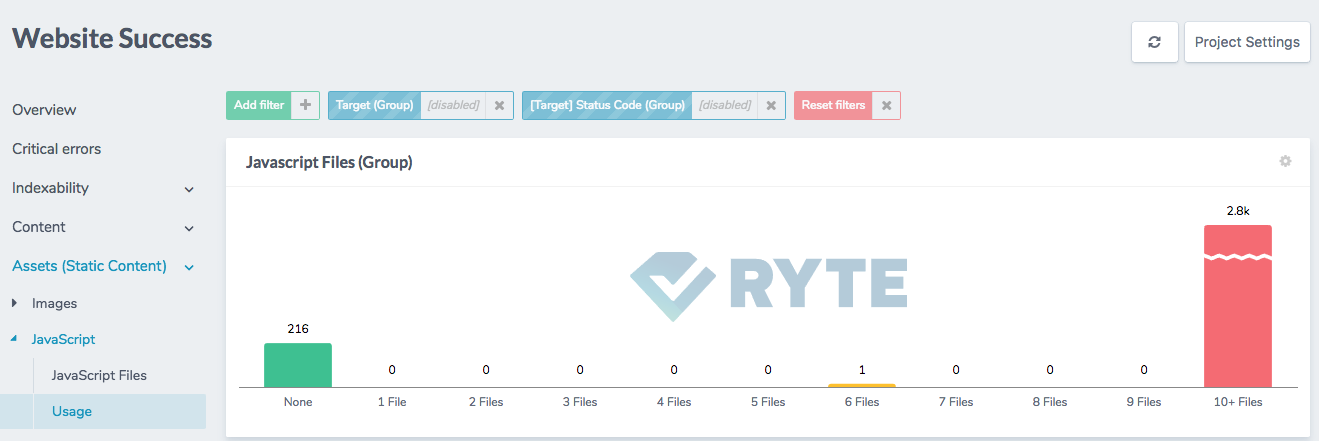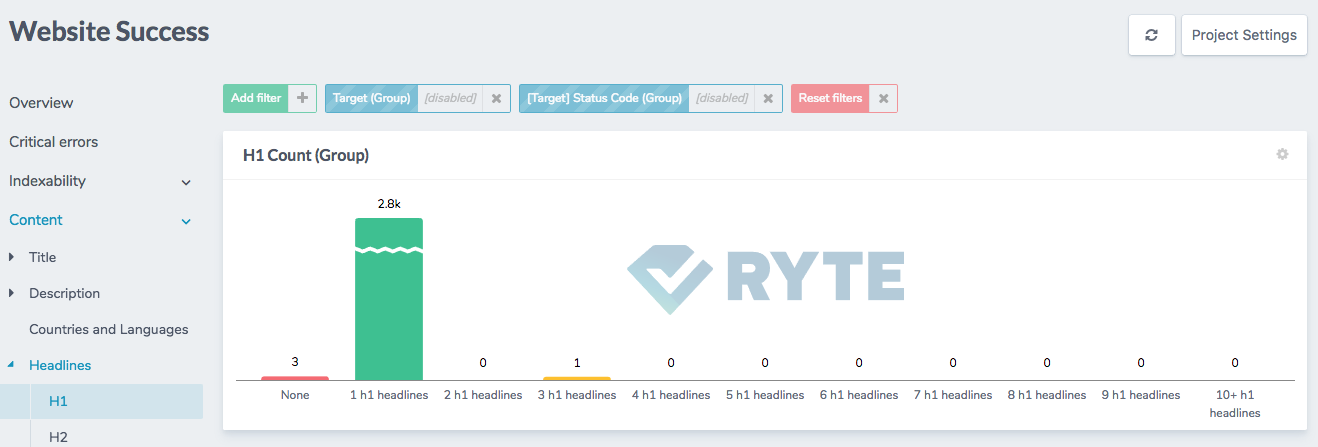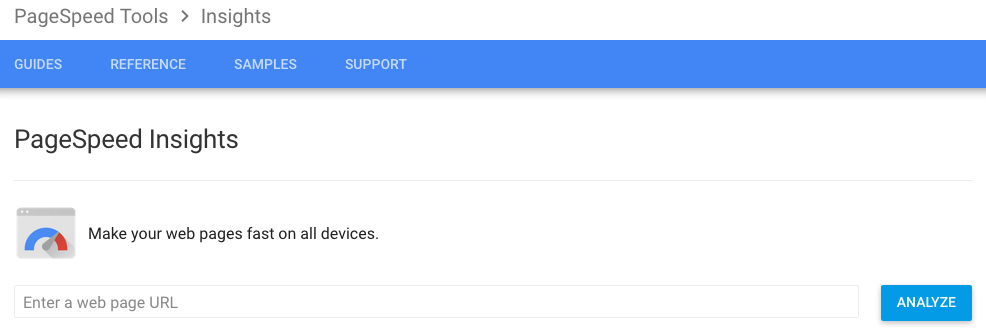A technical SEO audit involves checking the technical aspects of your website. Find out in this article how you can easily carry out an SEO audit.
Technical SEO is all about ensuring your website is technically perfect for users and search engines. A technical SEO audit is important for checking that your website is functioning properly. This gives visitors to your website a good user experience, which sends positive signals to Google, helping to improve your website rankings. In a technical SEO audit, your website is analyzed in detail based on various factors such as URL structure, page architecture, keyword rankings, or other OnPage factors. You can derive concrete proposals from a website SEO audit to try to improve your website's overall rankings in search engines.
In this article, we provide an audit checklist to guide you. We show you which features you need to check and optimize to ensure a flawless website.
1. How do you check your website’s indexability?
2. SEO onpage check: how do you check your OnPage factors?
3. How can you analyze your content?
4. How do you analyze page architecture and internal linking?
5. Are your status codes and redirects correct?
6. How do you check your website’s loading time?
7. Are there international versions of your website?
The first thing you should do when conducting an SEO audit is check your website's indexability. If your website is not indexable, it will not be visible in the Google search result pages for new visitors to find.
The site review is a quick way of checking the number of your website's indexed pages. Indexed pages are pages that are visible for users to click in the SERPs. It's important to check that search engines can crawl and index your pages properly.
You can easily run the site review in Google (enter site: into the Google search).

Figure 1: Running a site review in Google
Google Analytics is a fantastic free tool for gathering and analyzing website data. You can also check your indexed pages here. Under "Behavior" - "Site Content" - "Landing Pages", you will see a list of your landing pages.
Branding is an important marketing instrument and plays a central role in search engine optimization. If users search for your brand, it's vital that your website is the first one in the search engine results.
If the homepage is not displayed at the top when searching for the brand, this could be due to a Google penalty, your homepage may not be indexable, or maybe another page of your website is displayed as the top. In this case, you should think about adjusting your content to ensure that the most relevant content is on your homepage.
The mobile-friendliness of your website plays an important role in usability and for your Google rankings. Mobile friendliness has been an official ranking factor since April 2015. Therefore, it's important to ensure your website also appears in the mobile search results.
For more advice about ensuring a mobile-friendly website, download our ebook here. You can also use Google's mobile friendly test tool to test the mobile friendliness of your website.

Figure 2: Google’s test for the mobile-friendliness of a page
The robots.txt file gives instructions to the search engine, and must be saved in the root directory of the domain. It is important that the robots.txt
JavaScript and CSS play an important role for user experience. JavaScript can portray interactive engaging elements and in the CSS files, you can determine crucial design elements of your website. However, if these files are too large, they can slow down your website's loading time. You should consolidate as many JavaScript files as possible in one file to unnecessary server requests.
Read this article for more advice on how to analyze and optimize your JavaScript and CSS files.

Figure 3: Use Ryte to check the subpages on your website where JavaScript is used
The XML sitemap gives Google an overview of all URLs of your website, giving the search engine a complete overview of your website structure. This is helpful for Google in case any crawling problems should arise - your pages can still be indexed as Google knows the structure of your site. The sitemap should be in the root directory of your website, and you should upload it to the Google Search Console.
Orphan pages are pages that are not linked from any other page on your website. This means that search engine crawlers won't be able to find and crawl your page via the link structure, and users will also not be able to access the page. You can check for orphan pages with Ryte Website Success - in the navigation click on "Links" --> "Pages without incoming links". You should ensure that these pages are incorporated within your internal linking structure.

Figure 4: You can use Website Success to easily identify orphan pages
The noindex meta tag is the preferred method of preventing pages from being indexed by Google. This tag is included in the head area of the page in the source code. There are many reasons why you might not want certain URLs to be indexed, for example areas that require a login. The tag should be used with caution. If used incorrectly it could mean that relevant pages on your website are no longer indexed, which could lead to a big drop in traffic and revenue.
Websites change very quickly. You can always retrieve old versions of the website from the cache.

Figure 5: An older version of the website can be retrieved from the Google cache using the "cache:www.domain.com" request.
These 10 factors are all important for ensuring that your website is indexable. These should be at the top of your seo audit checklist. If your site isn’t indexable, it won’t be found on Google by your users.
You can check your title tags as part of your onpage seo audit or seo onpage check. The title can be found in the header section of an HTML page. The content of the head section is enclosed by an opening head tag and a closing head tag. The title is important for conveying to search engines the content of the page. The title is also visible to users in the SERPs, therefore it should accurately describe the page content to encourage users to click on it
Descriptions do not play such an important role as the title in the search engine evaluation of the page, and are no longer a ranking factor. However, page descriptions can heavily influence the click through rate of a URL in the SERPs, therefore are important factors to be included within your onpage optimization.
Read this article for more advice regarding how to create the best meta descriptions.

Figure 6: View of a search result with title and description on Google
To successfully and sustainably optimize a website, you have to have the right keyword strategy.
Titles are marked using the h tag. Numbers 1-6 are used to signify the relevance of the titles, h1 being the most important headline.
You can analyze your page headings with Ryte. In Website Success, click on "Content" - "Title" in the navigation to get an overview of your page headings.

Figure 7: Use Ryte to analyze the use of headers on your website
This article provides you detailed advice how to optimize your html heading tags.
The ALT attribute is an important factor in onpage optimization. It conveys information to Google regarding the content of images, as search engines can not read images. If your images can not be displayed for technical reasons, alt tags provide users with information about the image. They are also great for accessibility as they can be read by screen readers.
There are many tools available to help you easily check if your images contain alt tags or not. You can easily check with the Ryte free account.
There are two types of URLs: static URLs and dynamic URLs.
If you want to change a URL, you should implement a redirect. Generally you should only optimize URLs if it is really necessary, as changing the URLs could end up having a negative impact on traffic.
![]()
Figure 8: Example of a dynamic URL
![]()
Figure 9: Example of a static URL
The canonical tag is an indicator for search engines that the original content of a page is on a different URL. This is useful for example for avoiding issues with duplicate content - if two pages have similar content, a canonical tag can be used to convey to search engines which page is the more important, and therefore should be indexed. The tag is best defined in the head section of a page.
Since the rollout of the Panda update, Google has been improving the quality of search engine results by ensuring that top results contain relevant and high quality content. Therefore, the proportion of relevant content on page is an important factor for the evaluation of the page by search engines.
The keyword focus is an important aspect of search engine optimization. Generally, there are two strategic keyword orientations: the short-tail and the long-tail strategy.
Duplicate content is a source of risk for your website’s ranking, and presents a great challenge for many website owners, particularly owners of online shops, as search engines cannot judge which page is most important and should therefore be included in the index.
Internal linking is important for SEO, helping you avoid orphan pages and generally improving your site architecture. This can have a positive impact on your rankings.
Make sure you do not confuse Google by linking to different pages with the same link texts. It is important to maintain a clear keyword focus, especially with internal links.

Figure 10: You can use Ryte to analyze the use of link texts on your website
Internal linking is an important ranking factor and can have a significant effect on the website’s rating in Google search results.
The homepage is often the most frequently linked page, since every subpage has a link pointing back to the homepage.
The more a subpage is linked to internally, the greater its importance will appear to be.

Figure 11: You can use Ryte to improve the structure of your link hierarchy
Link texts can frequently repeat themselves (e.g., in the footer), and they can consist of a single word.
The status code 200 means that a web page is accessible. If you come across 4xx and 5xx status codes when checking your website's status codes, you should fix them as soon as possible. Too many errors have a negative effect on your Google rankings as well as on user experience. This article can help you identify and fix your error pages.

Figure 12: Use Ryte to identify 404 errors and redirects
301 redirects are very important if you have removed any pages. You can redirect a deleted page to a current URL to ensure that users do not come across a 404 status code. If you implement redirects, you should use 301 permanent redirects rather than 302 redirects.
If changing a URL is imperative, you should configure a 301 redirect.
Decide whether JavaScript files should be at the beginning of the source code, or if it is enough to load them at the end of the HTML document.
iFrames are used to display other web content as independent documents in a defined area of the browser.
With regard to search engine optimization, there is nothing wrong with using Flash. However, certain rules should however be observed. Flash should not be used for important content, as search engines cannot crawl flash. Therefore, makes sure that no entire pages are built with Flash.
The load time of a website is very important for search engine ranking. It should be reduced as much as possible, and can be affected by many factors.
There are many different tools for testing the page speed of a website, for example the page speed insights tool from Google. In this article, we compare 6 tools for testing page speed.

Figure 13: The PageSpeed Insights tool from Google
Particularly with mobile devices, users expect fast load times, as they want to access their desired information as quickly as possible when on the go. Mobile friendliness has been a ranking factor since April 21st 2015.
When designing your page, make sure it has good mobile usability. One possible way of doing this is redirecting to a mobile page.
If international versions of your website are available, there are many factors you can check when carrying out a technical SEO audit.
Search engines usually have different reference points to identify the language and geographic orientation of a website.
Google Analytics evaluations are detailed, and allow a fundamental data analysis.
Just like your own health, your website can be kept "healthy" through regular maintenance. A technical SEO audit is, for many reasons, the perfect way to check your website’s health. With this website audit checklist, we provide a plan with which you can regularly review the most important technical factors of your website. You can also download our seo audit template hereto help you even further with your technical SEO checklist.
Such a comprehensive analysis requires a certain amount of time, regardless of the size of your website. Long-term planning, conducting regular technical SEO audits, and continuous monitoring using common web analytics tools, will pay off in the long term. This is how you can sustainably improve the quality management of your website, and ensure that your website has the necessary quality to obtain good rankings in search engines.
Carry out a SEO audit with Ryte FREE
Published on 03/12/2019 by Olivia Willson.

After studying at King’s College London, Olivia moved to Munich, where she joined the Ryte team till 2021. She was previously in charge of product marketing and CRO, and also helped out with SEO and content marketing. When she's not working, you can usually find her outside, either running around a track, or hiking up a mountain.
Own the SERPs with the only Platform using exclusively Google Data.
Book free demoWe use Facebook Page to embed content that may collect data about your activity. Please review the details and accept the service to see this content.
This content is not permitted to load due to trackers that are not disclosed to the visitor. The website owner needs to setup the site with their CMP to add this content to the list of technologies used.